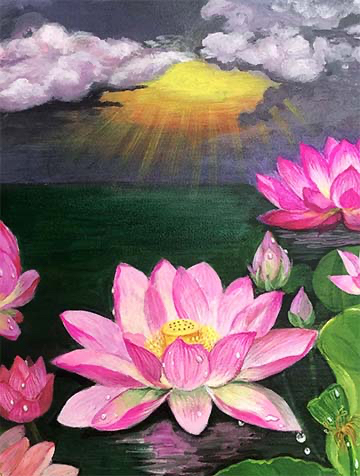(Clerwisdom.net) "The NTDTV 2007 Global Chinese New Year Spectacular" is touring in many cities. One of the dances, "A Dunhuang Dream," caused me to think a lot. This dance revealed the answers of a very profound puzzle: the meaning and origin of art.
The story is rather simple. An ancient stone sculptor made a vow to carve one thousand Buddhas to show his respect. He worked very hard day and night; nevertheless, he eventually ran out of ideas for different positions, no matter how hard he tried to think of them. He fell asleep beside the Buddha sculptures. In his dream, the sculptures suddenly came alive and showed him all kinds of unbelievable movements. The stone carver was shocked, but he remembered to pay his respects by sincerely kowtowing. He could not help but look at each Buddha's facial and body expressions. After a while, the Buddhas went back to their original positions, and he woke up. He suddenly had many ideas and continued carving. We heard this was how the Cave of a Thousand Buddhas was created in Dunhuang (in Gansu Province).
Those kinds of artistic creations are based on sincere faith; not only do they require physical labor, more importantly, the spirit is elevated. That stone carver expressed his faith in Buddha and God by creating the most magnificent images in his mind. Nevertheless, the images could not directly come from his imagination no matter how devoted he was. It was impossible for him to carve out divine beings' images just from his imagination.
The Buddha law is boundless! A "dream" naturally revealed the divine beings in front of the sculptor. His hands helped spread the images of divine beings to the world and made the Dunhuang Caves a wonder of human culture.
This beautiful dance shows the audience the ancient artists pious belief in Buddha and God and the divine beings' mercy for humankind. More importantly, this dance reveals the origin and the meaning of art.
Category: Perspective








